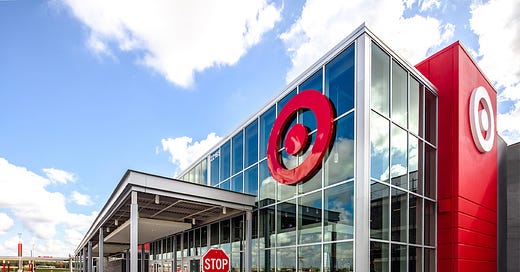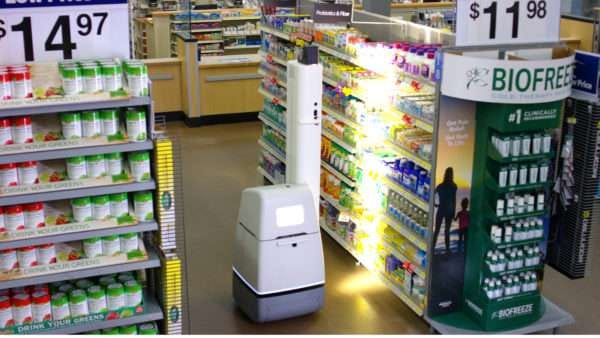
Target chose human workers over robots — here’s why
Who wouldn’t want tally, or a similar robot, in their stores? It turns out Target doesn’t.
It’s 5-foot-3 and 65 pounds. It can travel more than 25,000 miles alongside customers, work more than 100,000 hours, and check up to 30,000 products an hour. It takes its time strolling through the aisles. Moving at the same speed of a small child but heavy enough that it cannot easily topple over, Tally the robot can audit stock keeping units with 97% accuracy. Meanwhile it would take humans a full week to do the same amount of work and results as Tally with only 65% accuracy.
Who wouldn’t want Tally, or a similar robot, in their stores? It turns out Target doesn’t—even after spending one week with the machine in a downtown San Francisco store. Technology has increasingly eliminated manufacturing jobs, and human workers may be breathing a sigh of relief to find out Target still wants its “human-first” touch. But Target’s decision not to have a store full of Tallys is a bit more complicated.
When Automation Just Makes Sense
With retail stores increasingly taking on faster packaging and rapid shipping, it makes sense that robots would be utilized more. For example, by February 2020, Walmart reportedly will be adding self-driving robots to scrub the floors of 1,860 of its 4,700 stores. Meanwhile, the retailer plans to add shelf-scanning Bossa Nova robots at 350 stores, while bots at 1,700 stores will scan arrival boxes from Walmart delivery trucks. The machines will then sort the boxes by departments onto conveyor belts.
With Walmart continuing to try to meet its strongest match, Amazon, this is not particularly a surprise. After all, retail stores are trying to keep up with the likes of Amazon’s LGA9, a 900,000-square-foot fulfillment center in Edison, New Jersey. This warehouse is equipped to do everything — computer vision is used to count each product employees put in their hands (a reverse version of Amazon Go); small, orange robots organize shelves or move the shelves toward humans for packaging; computers notify humans where to find products and which bin to place the product into; and conveyor belts move the packages along from one worker to the next.
While not all Amazon facilities look like LGA9, human jobs at automation warehouses can leave much to be desired. Human workers may end up standing on their feet for 10-hour shifts, and workers may be at risk of dealing with limited bathroom breaks, mandatory holiday work shifts and strenuous quotas. The good news is LGA9 provides pain medication for free; the bad news is that workers will even need pain medication in the first place.
ADVERTISEMENT ~ Recommended Read on Amazon

While Target and Walmart both want to have the opportunity for speedy, error-free shipping, drive-up shopping and economical shipping rates for online shoppers, they’re using their employees in a different way.
Walmart has created new job roles for its human employees, including selecting customers’ grocery pickup and delivery order. And the company clearly plans to hold strong to this task, creating 50,000 of these kinds of jobs over the next three years.
Meanwhile Target reportedly plans to spend $50 million more for holiday payroll, even though the stores have added self-checkout and automatic cash-counting machines to hundreds of their store locations.
Is this because they care about humans? Partially. From a business standpoint though, it just doesn’t make sense to have a heavily automated workforce. Target has approximately 1,800 stores, and 80% of those stores are under 170,000 square feet. It simply doesn’t need the level of attention that an LGA9 puts out. It may not even need Tallys. While Amazon still can boast about hiring somewhere around 100,000 seasonal workers in 2018, those hiring numbers are starting to drop due to automation.
Target’s Great Challenge
As customers grow used to one-day and two-day shipping options, retail stores that still want to keep humans firmly on the tile floors may be in for a challenge.
In-store customers may find themselves fighting against online and drive-up orders simply for choosing to shop the old-fashioned way. It’s one of the reasons that store warehouses have items in the back of the store, or a separate address completely. The in-store inventory will then not clash with the warehouse inventory.
Arguably though, with more-accurate automated systems to keep track of inventory, smaller retail stores can avoid the three groups pitting themselves against each other. Automated machines know exactly where everything is because their computer vision is on everything at all times. If used correctly, customers can just tap their phone apps to see how many items are in stock, instead of searching all over the store to find an employee to do it.
But customers often want to interact with human store employees anyway, as opposed to a kiosk or a mobile app. And they’re speaking up about wanting to keep something with a heartbeat inside of these stores. According to a 2017 Pew Research Study, 85% of consumers prefer machinery to only do dangerous or unhealthy jobs. And 63% would pay more in stores just to interact with human beings.
So, whether online powerhouses and major retail stores decide to choose automation over humans, their buying audience is still choosing otherwise. And Target may be onto something for choosing their customers’ wishes.
(Note: This post was originally published as an Upwork freelancer for RETHINK Retail.)
Did you enjoy this post? You’re also welcome to check out my Substack columns “Black Girl In a Doggone World,” “BlackTechLogy,” “Homegrown Tales,” “I Do See Color,” “One Black Woman’s Vote” and “Window Shopping” too. Subscribe to this newsletter for the monthly post on the third Thursday.
If you’re not ready to subscribe but want to support my writing, you’re welcome to tip me for this post! I’ll buy a dark hot chocolate on you. Thanks for reading!












